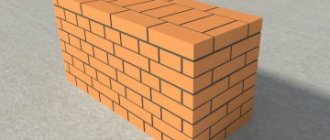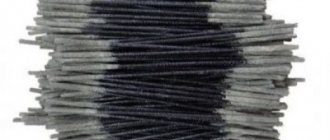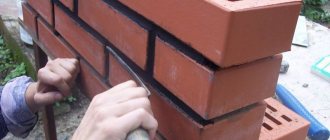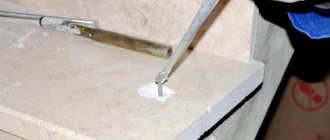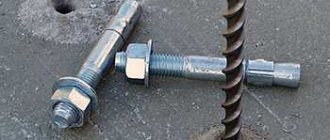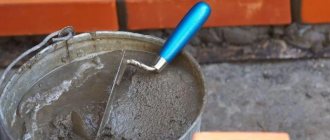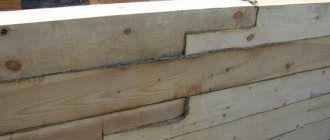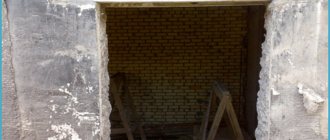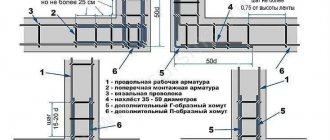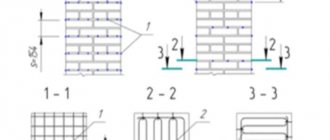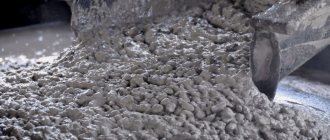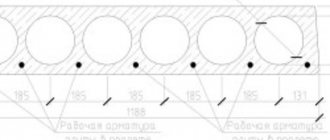Quite often during construction there is a need to mechanically connect various structural elements (window frames, door frames, and so on). Until recently, the simplest hardware was used for this: plastic or metal dowels. However, their use is only possible on solid substrates (concrete, brick, stone). Nowadays, the so-called adhesive or chemical anchor is successfully used for these purposes. One of the leading manufacturers of such products is the company “Hilti” (Liechtenstein). Hilti chemical anchors are produced in the form of capsule products (for installing one pin) and injection systems (cartridges with a capacity of 330 and 500 ml). The products of this company allow you to perform almost any fastening work: from fastening a heavy shelf on a wall made of cellular concrete to gluing additional load-bearing reinforcing bars in heavy concrete structures.
Hilti chemical capsule anchors
This type of chemical anchor is clearly dosed for the installation of only one fastening element. It is a cylindrical polyethylene container filled with an adhesive composition. The two components of the adhesive mixture are separated by an impenetrable partition. Mixing of the mixture components occurs at the time of installation. Products of this type are marked with the letters HVU, indicating the thread of the anchor pin and the depth of the mounting hole for it. For example, the marking “HVU M16X125” means that this capsule is intended for fastening an anchor rod with an M16 thread, a hole depth in concrete of 125 mm. The line of capsules is presented quite widely: from M8 to M39.
The technology for installing a stud using an adhesive capsule is quite simple:
- We drill a hole of the required diameter and depth in the base. The manufacturer recommends choosing a drill or drill diameter 2 mm larger for studs M8÷M16, and 3÷4 mm larger for M20÷M39. For example, for the “HVU M12X110” capsule you will need a drill with a diameter of 14 mm and a hole depth of 110 mm.
- Carefully clean the hole from dust using air or a brush.
- Insert the capsule into the hole.
- We twist the pin into the hole clockwise: the lower end of the pin breaks the capsule and when screwed in, the components of the adhesive composition are mixed.
The final hardening time of the adhesive composition, after which maximum loads can be applied to the stud, depends on the ambient temperature: from 20 minutes at a temperature of +20˚С to 5 hours at a temperature of -5˚С.
For studs experiencing increased dynamic loads, the company has developed special “HVU-TZ” capsules. The line of these types of capsules is designed to install studs from M10 to M20.
Calculation and application of chemical anchors and Hilti capsules
This type of fastening is often used for hanging removable elements of boilers, convectors, etc. from the wall. The stud is an almost universal option for outdoor work, although here everything depends on the characteristics of its protective coating. For example, the Hilti HST stud anchor is intended only for dry indoor conditions.
But it allows installation in concrete with traces of cracking. There are other designs of similar fasteners, the operating principle of which differs only in minor nuances due to the special design of the spacer sleeve: The fastener is very simple to use - in fact, it is just a metal tip with an internal thread and a cone-shaped wedge.
A hole of suitable size is pre-drilled in the concrete surface.
Hilti injection anchor systems
This type of chemical anchor (marked with the letters HIT) is a plastic cartridge with two sealed foil containers (one with adhesive filler, the other with a hardener). Today the company presents 7 varieties of this type of chemical anchor. The price of such anchors depends on the capacity of the cartridge (there are two types: 330 and 500 ml), the components of the composition, the area of application and the load that the stud installed with its use can withstand.
For example, the universal hybrid composition “HIT-MM-Plus” is a budget-class chemical anchor (the cost of one 330 ml cartridge is 650÷900 rubles). The two-component adhesive is made on the basis of urethane methacrylate. Recommended for installation of threaded rods in the range M6÷M16 in basic building materials such as brick (solid and hollow), lime-sand blocks, concrete, blocks made of cellular types of concrete, artificial and natural stone. For fastening studs in hollow blocks and bricks, the company offers specially designed perforated plastic sleeves, which increase the fastening strength and reduce the consumption of adhesive.
And the composition “HIT-RE-500-V3”, which closes the line of injection anchors, already costs 2700–3300 rubles for a package with a capacity of 330 ml and is intended for gluing the releases of working load-bearing reinforcement of floors, columns, foundations and flights of stairs. A composition based on epoxy adhesive with additives that allow the installation of studs and reinforcing bars with a diameter of 10÷55 mm even in holes completely filled with water.
We extrude the glue components using a mechanical hand dispenser. For chemical anchors with a capacity of 330 ml, the dispenser “HDM-330” is intended, for 500 ml - “HDM-500”. We insert the capsules into the plastic cassette of the dispenser (it is included in the kit), screw the mixer onto the threaded part of the cartridge (in which the components of the adhesive composition are mixed) and through its conical tube the glue enters the drilled hole. Parallel pistons are connected to the dispenser handle, and when it is pressed once, one portion of the adhesive composition (about 5 ml) is supplied.
Video about using the “HIT-MM-Plus” composition and the “HDM-330” dispenser:
For professional use in large volumes of anchoring work, the pneumatic dispenser “P-8000-D” and the battery dispenser “HDE-500-A22” are used.
Advantages of the Hilti HIT-RE-100 adhesive anchor
When using HIT-RE-100 adhesive for anchors in concrete, consumers can count on the following advantages of this product:
- Possibility of use indoors and outdoors with the base material, regardless of its current state (dried, moistened, filled with moisture, etc.).
- Large selection of additional accessories (metal brushes, electric dispenser, injection pistons).
- High level of efficiency for use in solid concrete foundations without cracks.
- Long curing period, due to which you can make the necessary adjustments during installation.
- Easy to clean, making installation much easier.
The cost of adhesive for anchors in concrete Hilti HIT-RE-100 starts from 1,500 rubles for a 330 ml container.
Hilti anchor for brickwork
Nav view search
The disadvantage of this type is the complexity of installation; without using electric tools, impact wrenches, high-quality fastening to brick is impossible.
Rod clamps.
These anchor systems are an elongated subtype of wedge ones, used for fastening through several layers of cladding or insulation.
The main advantage of rod clamps is the ability to be placed at an angle, but this property is poorly compatible with brick; in extreme cases, tensile loads on the anchors are allowed. Their length can be trimmed; a nut and washer are used to fix them on the other side of the wall. All of the above types implement a mechanical method of fastening the anchor: resistance to tearing out depends on the degree of expansion of the metal part being inserted in the brick wall and the reliability of the screw.
Fischer VBS-M anchors for repairs of facing masonry of buildings and structures.
When applied between the fastening material and the base of the adhesive layer, the adhesion strength increases significantly. Such anchors are called chemical or adhesive; the required composition—synthetic resins and other fast-hardening organopolymers—is applied to the prepared hole using special dispensers. This variety provides high reliability when fastening anchors in hollow brickwork, allows you to control the planting depth and is suitable for both indoor and outdoor use.
The introduced composition expands inside cracks and voids, hardens in a matter of seconds and has high adhesion to metal and ceramics.
In addition to the main advantage of ensuring the strength of the fastener, they are resistant to moisture and aggressive environments and completely seal the connection. At the same time, the Hilti anchor and its analogues do not cause mechanical stress and do not crack bricks; they are definitely recommended to be purchased for installation along the edges of walls.
Regardless of the type of anchors, holes for fastenings are drilled strictly at right angles and only on brick.
Certificate of compliance of Hilti chemical anchors with sanitary, epidemiological and hygienic requirements for an indefinite period 8. Having selected products on our website or in the showroom of our company, you can pay for them in any way convenient for you:. And we offer to place an order without lengthy registration - with the help of our manager. They will call you back, clarify all the details and your Personal Account will be created automatically. You will be sent by email all the necessary information to log in and manage your orders.
Placement in masonry joints is a gross violation of technology; reliable fixation on a paintable mortar cannot be achieved. The process itself is simple: it is not recommended to use a hammer drill on a brick wall; a hole with the required dimensions and depth is drilled; an anchor is screwed or driven into it to the very base before expansion begins. After which it is tightened according to the instructions; the final stage requires effort and accuracy.
The nuances include the need to select the correct attachment point and the depth of placement of anchors in the brickwork; the thickness of the plaster layer or other finishing material, if any, must be taken into account.
Installation nuances
Any slope leads to weakening of the fasteners. When installing drive-in anchors, it is recommended to use a block of wood rather than hammering on brass or steel.
Immediately before placing the fastener, the hole is carefully cleaned with a brush with a small diameter or blown out. Installation of Hilti chemical anchors is carried out according to a similar scheme; if you have a comprehensive system of tools, it will not be difficult. In this case, special cordless hammer drills with hollow drills are used to drill holes in brick walls; for clearing, a blow gun and round brushes are used.
The Heatley anchor itself is installed using a dispenser and modular mesh sleeves with centering rings.
The standard length of the pre-fixing devices is 85 and 50 mm, they can be connected if necessary.
Types and features Depending on the purpose of use and the design of the fastening system, the following types of anchors are distinguished: 1. Installation nuances Regardless of the type of anchor, holes for fastenings are drilled strictly at right angles and only on the brick.
Author: Ivan Yaskevich. Masonry mortars for bricks Brick mortars are classified as building materials with high requirements Total: check In stock Add to cart Buy in one click. Compare product. Hilti anchor technology You recently viewed.
Anchors are fastening elements consisting of several parts: expansion and non-expansion. The first includes a bolt, made of high-alloy steel of structural grades.
Close Free delivery terms. Close Having selected products on our website or in the showroom of our company, you can pay for them in any way convenient for you: cash, bank card directly in the office, non-cash payment or bank transfer, requesting an invoice for payment from the managers.
Injected solution HILTI HIT-HY 270 (adhesive composition 330 ml)
Close Quantity calculation. I agree with the site’s Terms and Conditions for the processing of personal data. Submit your application. Close Order a sample.
Request a call. Close No time or desire to register?
You simply can’t think of a better fastener for hanging structures than an anchor for a brick wall. They are also used with no less success for hanging heavy structures on concrete walls.
We understand you!
